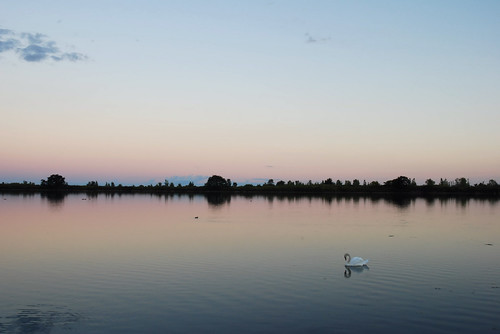
Should you find yourself fortunate enough to be spending the Labour Day weekend in our fair city, consider a trip to Tommy Thompson Park. While most people looking to escape go north, far north, to places where “Toronto†is considered by some near-profanity, travel south, along Leslie Street, to where it turns into the Leslie Street Spit. Here, the rubble and remains of forgotten buildings merge with wilderness to create the city’s most surreal park.
Stretching out about five kilometers from the mainland, the unique environment feels like some kind of unsanctioned playground with incredible views of the cityscape. To the east, because of the slope of the city, a great swath of the urban forest’s green canopy goes on uninterrupted with unseen houses below until it reaches the cluster buildings standing tall at Kingston Road and Victoria Park.
Travel to an edge of the peninsula to realize the true charm of the place. What you’ll find is what makes up most of the ground you’re standing on: broken concrete, rebar, and bricks, all victims of Toronto’s insatiable appetite for change. Unlike most parks, where common sense encourages visitors to leave a space as it was found, the Leslie Spit invites you to take part in the slow destruction of the waste and debris that make it up.
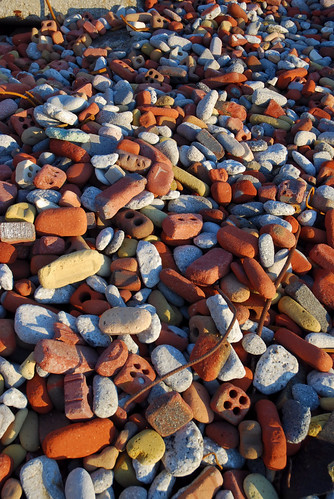
Bricks, softened and rounded by water over time, are like stones from a strange foreign land. They can brought home to be used as candle holders and as a memento for your trip. It’s interesting to think of a brick’s life — some marked with their creator’s stamp (for example, J Price). It may have been born out of the Don Valley to become part of a King Street structure and then finally laid to rest on the Spit. Cryptic messages and precarious towers made up from bricks, only days or even hours old, when found, reveal a connectedness with past visitors.
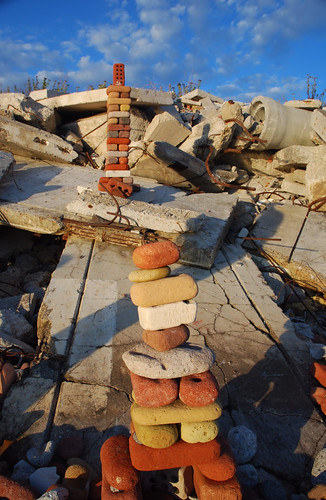
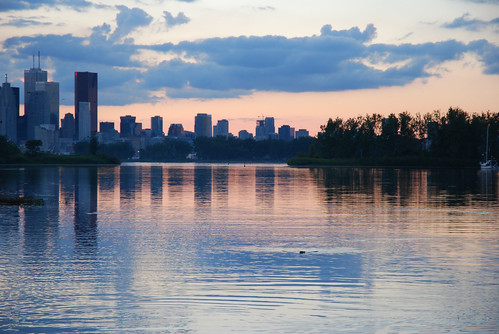
Wildlife is in abundance here. From the floating bridge, follow the trails of bubbles beavers leave as they sink underwater for minutes at a time. Earlier in the year, thousands of cormorants make an area on the west side their home. A bouquet put together from the wild flowers that grow here is sure to bring you good fortune upon your return home. If this is your intention, bring a wet cloth to wrap the stems with to prevent them from wilting.

At the southern tip sits a lighthouse atop a hill, a marker of sorts rewarding both cyclists and walkers for completing the journey. This elevated point offers the best view of the Leslie Spit and all that surrounds it. Despite being a place that is mostly wildlife and rubble, it’s not hard to imagine urban explorers finding adventure here.
Photos by Mathew Borrett

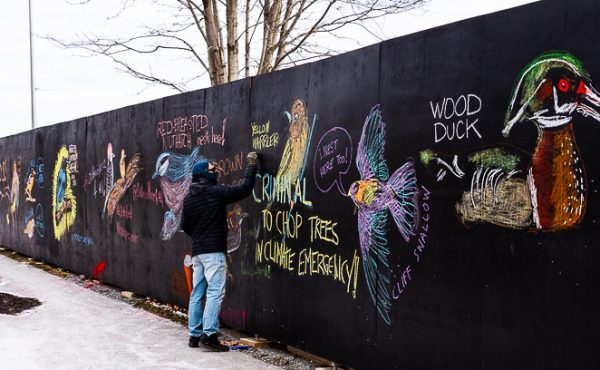

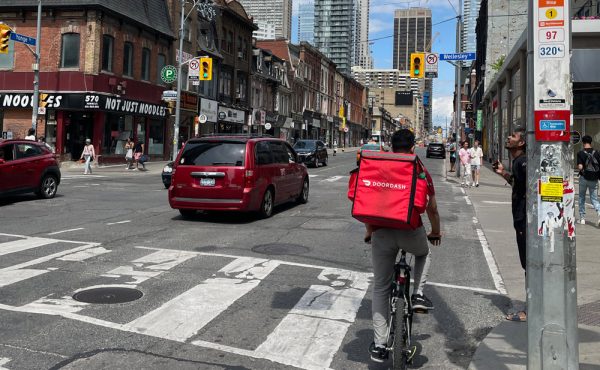
14 comments
Leslie spit is by far one of my favourite spots in Toronto. I am always amazed that very few people know about it. It is just a shame that the spit is only open during weekends. There is more information about the place here:
http://en.wikipedia.org/wiki/Tommy_Thompson_Park
Carlos> It’s open in the evenings too — perhaps not “officially” but will be full of cyclists and joggers and etc after 5 or 6pm. Basically once the rubble-dumping is done for the day. The day-time closure is the due to it being a “living” grown piece of land.
Shawn, thanks for the info. I read that the landfill will still be operational for the next 50 years. Hopefully they will end it sooner than that. Maybe they could start a new spit somewhere else…
Isn’t it illegal to pick wild flowers?
does anyone know when ‘monarch season’ is? sorry to sound dense, but i was told that at some point in the year, you can visit the spits and see hundreds, if not thousands of monarchs. any tips?
i believe its happening right now.
Likely around the same time as they do in Point Pelee to the southwest (if they do indeed pass through the Spit).
http://www.pc.gc.ca/pn-np/on/pelee/natcul/natcul5_e.asp
Be warned: the smell of rotting fish is strong.
. . . Bricks, softened and rounded by water over time, are like stones from a strange foreign land. They can brought home to be used as candle holders and as a memento for your trip. . . .
————–
If everyone did as your suggest, there’d be nothing left in a few decades. Leave it where it is and respect nature’s way.
A superb, evocative article.
Gorgeous photos. Thanks, Matthew.
Yup – I’m outta step.
The Spit is a sad testament to how we destroy and waste – it’s often ground up and discarded buildings or their materials, and we toss the stuff into the lake rather than begin to practice a retain, repair, or renovate. This lakefill has grown to become larger than the Toronto Island in maybe four short decades – and for the sake of the Escarpment and our climate we have to limit our consumption.
Folks, where do all these raw materials come from?
Think about it please.
I’ll definitely check it out. As an urban explorer of sorts, I’m surprised I never heard of it.
Maybe the Leslie Spit Treeo should perform some reunion shows to up the profile of the spit….
Good piece.